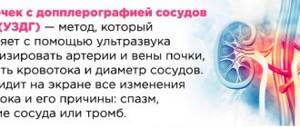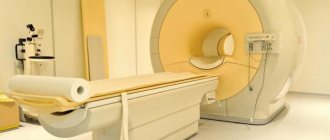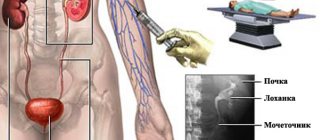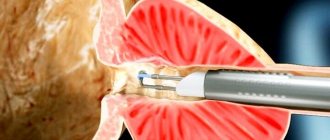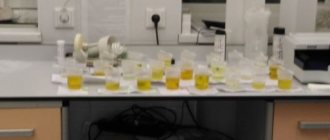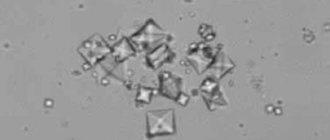Urinalysis according to Zimnitsky is one of the informative diagnostic methods for suspected renal failure, pyelonephritis or heart disease. The kidneys excrete water and substances dissolved in it. In order to evaluate their functionality, this study was proposed, based on urine density analysis. Its author is S.S. Zimnitsky is a domestic therapist. In this article we will talk about how to correctly collect urine for analysis, about the interpretation of the results and about some pathologies accompanied by changes in the volume and density of urine.
Specific gravity is underestimated
The state of a noticeable decrease in the relative specific gravity of urine, in comparison with the norm, is called hyposthenuria. With it, the specific density of urine is significantly less than the lower limit of normal. The cause of this deviation may be excessive consumption of water, juices and any other liquids. Men, for example, often abuse beer, which may well affect the relative specific concentration of urine in the direction of its strong reduction. If we talk about pathological processes that contribute to hyposthenuria, we can highlight the following:
- Diabetes (sugar);
- Regeneration of edematous infiltrates at the end of inflammatory processes;
- Low-calorie diet with a lack of enzymes and vitamins, leading to a dystrophic state;
- Protracted pyelonephritis;
- Chronic forms of renal failure;
- Nephrosclerosis is a disease that provokes changes in the structural tissue of the kidneys (formation of nodes);
- Glomerulonephritis;
- Interstitial nephritis;
- Taking diuretics in violation of doctor's recommendations;
- Excessive passion for drinks.
Both hypersthenuria and hyposthenuria can cause serious negative consequences, so it is advisable to identify it in the early stages. These conditions can be diagnosed relatively easily, using a urine test using the general method and according to Zimnitsky’s scheme, therefore, people who are predisposed to such problems should undergo regular examinations.
Step Four: Maintain Hygiene
The Zimnitsky urine collection technique (algorithm) involves preliminary hygienic procedures. Only in this case the result will be correct. If this point is ignored, foreign impurities and bacteria may be found in the material. This will give a poor result of the study.
Before collecting urine, be sure to wash your hands with soap. To do this, it is better to use antibacterial cleansers. You also need to toilet the genitals. Men simply need to wash their penis. Women, in addition to washing, need to insert a cotton swab into the vagina. Otherwise, the flora of the reproductive system may be transferred by the urine stream into a sterile container. The result of the analysis will be distorted and unreliable.
End-stage chronic renal failure uremia
Patients have a puffy, yellow-gray face, pale, dry skin, with traces of scratching (due to itching), sometimes with hemorrhages (“bruises”). There is a “uremic odor” - the smell of ammonia from the mouth. There is emotional instability - lethargy, drowsiness; lethargy is often replaced by excitement and inappropriate behavior. The rhythm of sleep is disrupted.
Muscle weakness and muscle twitching associated with electrolyte disturbances, primarily hypocalcemia, are observed. Convulsions are possible. Manifestations of bleeding in the form of nasal, gastrointestinal, uterine and other bleeding are common. Peripheral neuropathies with paresthesia, sensory disturbances, and then motor disturbances are observed. Dyspeptic disorders often occur, which manifest themselves in the form of nausea, vomiting, hiccups, anorexia, and diarrhea. The basis of dyspepsia is uremic damage to almost all parts of the gastrointestinal tract - cheilitis, glossitis, stomatitis, esophagitis, gastroenteritis. Most patients have severe arterial hypertension, sometimes malignant, and retinopathy is noted. Severe arterial hypertension, being associated with the phenomena of arteriolonephrosclerosis, further aggravates the phenomena of chronic renal failure. Anemia develops naturally and has a normochromic normocytic character. In its genesis, toxic effects on the hematopoietic organs, a decrease in the biosynthesis of erythropoietin, as well as the hemolytic component are important. Iron deficiency may occur and is associated with increased bleeding. With uremia, severe changes in the heart are observed due to arterial hypertension, anemia, electrolyte disturbances and toxic damage to the myocardium. In a number of patients with pre-existing arterial hypertension and hyperlipidemia, severe coronary atherosclerosis and symptoms of coronary artery disease are observed. Heart rhythm disturbances and manifestations of heart failure are common. A pericardial friction rub may be heard due to fibrinous pericarditis. As a result of decreased immunity, infectious complications often occur, especially pneumonia. In the final stage, uremic coma develops with large noisy breathing caused by acidosis (Kussmaul breathing).
- Back
- Forward >>
Analysis for children
For a child, a urine test according to Zimnitsky is prescribed by a pediatrician or nephrologist if there is a suspicion of a disorder in the functioning of the urinary system.
The methodology is the same for all ages. Urine is collected according to Zimnitsky from children in pre-prepared and signed sterilized jars (8 containers).
The first bowel movement on the day the study begins (at 6 am) is poured into the sewer, then every 3 hours you need to pee into a jar. Biomaterials are tightly closed with a lid and stored in the refrigerator. The next day at 9.00 am, the collection of material is completed, and within the next 2-3 hours all biomaterials are delivered to the laboratory.
The main task of parents when conducting a urine test according to Zimnitsky in children is to control the hygiene of the genital organs. Before going to the toilet, it is necessary to wash the genitals to prevent various bacteria from the rectum and perineum from entering the biomaterial of the study.
On the day of collection of biomaterial, the child should lead a calm lifestyle. It is worth excluding classes in sports sections and active games.
The amount of fluid consumed should be natural; you should not give your child additional juice, tea and other water if it is not necessary. It is important to watch your food; it should not be too salty, fried, or spicy, because all this increases thirst.
At night, a sick child needs to be woken up to go to the toilet. Kidney function is considered good if daytime diuresis (the first 4 portions) exceeds nighttime diuresis by 2 times.
The daily volume of urine in children is measured using the formula: 600+100×(n-1), where n is age (full years). If the patient is over 10 years old, then the volume of secondary urine is about 1.5 liters. Specific gravity figures are normally in the range of 1.008-1.025.
Compensated chronic renal failure
Due to a decrease in the number of working nephrons, the remaining ones function under conditions of increased osmotic load, i.e., they must excrete more soluble substances per minute than the nephrons of a normal kidney. This is done by increasing the volume of urine - polyuria develops. The normal rhythm of urine excretion is disrupted - nocturia appears. The relative density of urine decreases - it becomes equal to the relative density of protein-free plasma filtrate (1010-1012) - isosthenuria. Hyposthenuria may occur when the relative density of urine does not exceed 1008. Following a violation of the concentration function, there is a loss of the kidneys' ability to dilute. Azotemia is moderate or does not exceed normal values. Clinically, at this stage, patients complain of thirst, increased amount of urine, and increased fatigue. Sometimes there is shortness of breath associated with developing anemia and acidosis. Complaints of decreased appetite and nausea are common. Due to the development or increasing severity of arterial hypertension, patients may complain of headaches and blurred vision. As renal failure progresses, diuresis decreases to 800-600 ml, which is usually accompanied by a significant increase in azotemia and indicates the onset of end-stage chronic renal failure. Without the use of hemodialysis, such patients develop a picture of chronic uremia.
The essence of urine research according to Zimnitsky
The kidneys are a multifunctional organ, the stable functioning of which determines the normal functioning of all other body systems. Urinary dysfunction refers to indicators of imbalance in the functioning of the paired bean-shaped organ. A general analysis may raise doubts about the correctness of the diagnosis. Urine examination according to Zimnitsky is an objective method for assessing the ability of the kidneys to excrete and concentrate urine. “Popular” diagnoses based on the test results are chronic renal failure, diabetes mellitus and nephritis.
hypoisosthenuria
"hypoisosthenuria" in books
A complex machine is immunity. But the more complex the machine, the more likely it is to break down. Is it so?
A complex machine is immunity. But the more complex the machine, the more likely it is to break down. Is it so? — This complex machine is immunity. Birth defects and old age - Yes, not simple. “But the more complex the machine, the more likely it is to break down.” - This
A complex machine is immunity. But the more complex the machine, the more likely it is to break down. Is it so?
A complex machine is immunity. But the more complex the machine, the more likely it is to break down. Is it so? — This complex machine is immunity. Birth defects and old age - Yes, not simple. “But the more complex the machine, the more likely it is to break down.” - This
The machine that I fly in the air is called a “medium-haul passenger aircraft Tu-154.” But just as in English the word “ship” is feminine, so we, pilots, talk about our own plane: “she”, “machine”. Our nurse. This alone implies that we,
The Designer's car, like a wolf, is fed by its legs. And even if at first you can do without a car, over time you will feel that having one becomes more and more important to you.
Car Read the poem to your child: In the car, in the car The driver is sitting. The car, the car goes, hums: “Beep, beep! Beep beep!” First, read at a slow pace, the baby slowly turns an imaginary “steering wheel” in front of his chest and walks around the room - “driving” in a car. You fall silent - child
House and car
House and car Take two cubes, a prism and a brick. Explain to your child how you can build a house by placing cubes on top of cubes. Then show a “car” made of a brick and a cube placed on it. Speak out all your actions. For example: “I’ll put a roof (prism)
One car, two car...
One car, two cars... To make time on the road pass faster, you can count! You can count anything: light bulbs on an escalator, men entering and women leaving, young men in red jackets. Or, for example, if you are traveling on public transport, and cars flash by the window
Car For many people, the car has become a necessary assistant, friend, and even replaced home and family. You can often hear that “a car is a man’s main wife.” She requires such care and attention that loved ones never receive. Where do men go - going to
The Machine For a machine that wants to remain mechanical and waste time, self-remembering is a hindrance. The machine would rather want the fulfillment of its desires than the self-remembering that interferes with it. P. D. Uspensky told us that a false personality resists
II. Machine technology is the same age as life in general moving freely in space. Only the plant, as we see it in nature, is simply an arena of technical processes. An animal, insofar as it moves, also has a technique of movement, with
Id (It) – Machine
MACHINE Recently I spoke with an outstanding scientist and inventor. He was explaining to me how to handle a new household machine. I said, “Everything is fine, but the machine needs to be looked after. Could you automate it so much that a housewife doesn’t have to
Machine Preparation of partsThe machine can be divided into three parts: cylinder, spool and transmission mechanism. The spool consists of two parts - a fixed one, soldered to the cylinder, and a movable plate that controls the supply of steam. The stationary part of the spool is cut out from
Car Car – The word “M.” everyone understands, but the exact definition of the concept denoted by this word was established only during the present century thanks to the efforts of a number of scientists who worked on the classification of concepts of practical mechanics. Accepted in
How to properly collect urine
Correctly collecting urine is a simple matter and at the same time quite troublesome, as it requires special care from the patient, since in no case should you confuse anything or give the laboratory technicians incorrect information about the liquid taken during the day. The accuracy of the analysis result depends on correctness and care.
On the morning of the test, the patient will have to get up early, at 6 a.m., empty his bladder and pour its contents into the toilet. The very first portion will not be required for analysis. From now on, it will be possible to visit the restroom strictly by the hour - every three hours the patient will have to urinate in a jar designated for this time. The main thing is not to confuse anything. It turns out that toilet visits need to be scheduled for 9 am, noon, 3 pm, 6 pm, 9 pm, midnight, and then 3 and 6 am.
Every time before visiting the toilet, you must wash your genitals with water and only then collect the urine. The contents of the jars must not be mixed under any circumstances!
Sometimes the patient never has the desire to urinate. In this case, the laboratory assistant should hand over 7 full jars and one empty jar, indicating the time at which the patient was unable to empty the bladder.
It happens that within three hours the patient needs to visit the restroom several times, especially during pregnancy. With this option, he should take the provided jar and collect the analysis in it. If it is overfilled, then you should ask the laboratory assistant for an additional container and indicate on it the number of the corresponding jar. We remember that apart from the first portion of urine, we don’t pour anything else into the toilet, everything needs to be returned!
Scheme for taking a urine test according to Zimnitsky
What to do if the specific gravity of urine deviates from the norm
It is advisable to treat such conditions in a hospital or at least under the constant supervision of a doctor - an endocrinologist, nephrologist or pediatrician. Patients with diabetes mellitus, at the slightest hint of a change in urine density, should take the doctor’s advice especially responsibly, since diabetes can provoke rapid developments and seriously complicate recovery
In this case, it is very important to diagnose the cause of the pathology at an early stage of development and immediately begin to eliminate it
Fundamentally, the treatment of this disease is no different from any other, since a thorough diagnosis reveals the cause, that is, a diseased organ that creates problems for the entire body, and makes it possible to prescribe a set of treatment tactics in the future. The prescribed drugs should act, first of all, directly on the original source of the problem and have as little effect on healthy organs as possible.
If the problem is kidney failure, a mandatory factor for successful treatment is a gentle diet and a healthy lifestyle. The diet should be devoid of spicy, smoked, salted foods and contain as few culinary spices as possible. Quitting smoking and alcohol is not even discussed. Drug treatment, if unavoidable, should be carried out strictly according to the recommendations of the attending physician and under his constant supervision.
If the phenomenon of hyposthenuria or hypersthenuria is observed in a patient in a chronic cycle, then such patients are registered with a doctor and require a systemic examination every three months with mandatory urine and, possibly, blood tests.
Quite often, hypersthenuria in diabetes mellitus is a side symptom. A feature of this pathology is an increased level of sugar in the blood, which leads to increased urination, and this, in turn, requires the consumption of more fluid to restore water balance. Ultimately, this can lead to problems with the kidneys and the entire urinary system.
If the patient has diabetes mellitus, then treatment consists of monitoring blood sugar levels and regular examination by a nephrologist in compliance with all his recommendations. Unfortunately, the disease is chronic and incurable, so you can only control its course in order to avoid side effects in the form of disruption of the renal system.
Video on the topic
How to properly collect urine?
The day before the analysis, and during it, you should not eat foods that affect the change in the color of urine (carrots, beets, marmalade and lollipops with dyes). Before each urination, you must first rinse your genitals with warm water. If a child urinates on the potty, it should be thoroughly washed and wiped dry before emptying.
To collect urine from infants, a new urine bag . Pregnant women who have edema during test collection are prohibited from using diuretics. Collected test jars should be stored in the refrigerator .
Decoding the result of Zimnitsky's test
Norm:
- The total daily volume of urine excreted is 1500-2000 ml.
- The ratio of fluid entering the body and the volume of daily urine is 65-80%.
- The volume of urine excreted during the day is 2/3, at night – 1/3.
- Significant increase in urination after drinking liquid.
- Fluctuations in urine density in samples range from 1,003-1,035 g/l.
- The density of urine in several or one jar is more than 1020 g/l.
- The density of urine in all samples is less than 1035 g/l.
Pathology:
| Hyposthenuria | This is low density urine. Diagnosed when urine density in all jars is less than 1012-1013 g/l. In this condition, reabsorption of primary urine occurs weakly. |
|
| Hypersthenuria | This is high density urine. It is diagnosed when the density of urine in one of the jars is more than 1035 g/l. A condition where reabsorption exceeds the rate of urine filtration in the glomeruli of the kidneys. |
|
| Polyuria | This is an increase in the volume of daily urine with low specific gravity. A condition in which there is an increase in the formation of primary urine during the filtration process.
|
|
| Oliguria | This is a decrease in the volume of daily urine, which has a high specific gravity. There is a disruption in the filtration processes.
|
|
| Nocturia | This is an increase in the volume of urine excreted at night (more than 1/3 of the daily volume). |
|
Indicators for children and adult patients differ in daily diuresis. The exact volume of daily urine in children under 10 years of age is calculated as follows: 600 + 100 * (n – 1), where n is the child’s age. Normal diuresis in children over 10 years of age approaches the adult norm and is approximately 1.5 liters.
In conclusion, the laboratory doctor indicates the results obtained and their compliance with standards. The assessment is carried out by the attending physician.
Preparation for delivery
To carry out the analysis you will need to prepare:
- 6, 8 or 12 clean jars;
- alarm clock;
- a form for recording the time and amount of liquid drunk.
Jars for analysis
Form for analysis according to Zimnitsky
Preparing containers
Containers are prepared based on the sample collection method according to Zimnitsky:
- 8 jars, if once every three hours;
- 6 jars - once every four hours;
- 12 jars - every two hours.
Jars for analysis should be:
- washed clean;
- disinfected;
- dried.
What should you not eat or drink the day before?
Before taking the test, the patient is advised to refuse:
- products that color urine in any color (turmeric, beets, rhubarb);
- spicy and highly salty foods that can cause thirst;
- diuretics or herbs that cause this effect;
- excess liquid.
On the day of the test and the day before it, it is recommended to drink no more than 1-1.5 liters of liquid.
General concepts for the Zimnitsky test
The test consists of collecting eight portions of urine over 24 hours, followed by determining the total volume obtained, density, and the dependence of the intensity of the urination process on the time of day.
Carrying out the procedure
To perform the examination, the patient must prepare:
- 8 clean and dry containers;
- a watch or other device with an alarm function;
- paper and pen for recording information about the time and number of drinks, first courses, and water consumed.
Samples are collected over one day. For example, at 6 o’clock in the morning the patient should urinate in the usual way, i.e. into the toilet. Then, every three hours it is necessary to collect the material, each time in a separate, pre-prepared jar.
This will result in 8 samples collected between 9am and 6am the next day. Unfortunately, this manipulation will have to be performed even at night (at midnight and at three in the morning), so it is advisable to set your alarm clock or mobile phone in advance to the loudest ringing sound in order to hear it.
In addition, the subject must keep records of the amount and time of drinks consumed and liquid food eaten (for example, soup or borscht), and upon completion of collecting material for the study, all jars should be taken to the laboratory, and information about the nature of the diet should be given to the doctor or laboratory assistant.
It is advisable to keep all filled containers in the refrigerator until they are sent to a medical facility.
More detailed information on how to submit material for examination should be obtained from your attending physician.
Indications for use
The Zimnitsky test is recommended to be performed in the presence of the following indications:
- symptoms of renal failure;
- complaints of frequent urge to urinate at night;
- pyelonephritis;
- hypertension;
- diabetes;
- glomerulonephritis.
Norms
Using the Zimnitsky test, several parameters of the urinary system are assessed, which include:
- urinary daily diuresis – normally ranges from 1500 to 2000 ml;
- the ratio of the amount of fluid excreted to drinks and liquid meals consumed: in a healthy adult this figure ranges from 65 to 80%, in children – from 65 to 75%;
- the density of the test sample should be over 1.02.
Deviations from the norm
Reduced density (hypoisosthenuria) is recorded in renal failure, pyelonephritis, and also in diabetes insipidus.
Increased density may be a sign of the development of diabetes mellitus, glomerulonephritis, and in addition, it is diagnosed with toxicosis of pregnant women.
A decrease in the volume of fluid secreted may be a signal of a tendency to edema, which occurs in a number of diseases (for example, heart failure, certain disorders of the kidneys). In children, this condition can occur due to dehydration due to the development of a febrile state due to infectious diseases.
An increase in the amount (polyuria) is recorded in diabetes mellitus, kidney failure and other conditions.
By the distribution of the secreted fluid during the day, it is also possible to identify signs of various diseases. Thus, with disturbances in the functioning of the heart, nighttime diuresis significantly exceeds daytime diuresis. If the indicated volume is approximately the same both day and night, this may be a sign of a decrease in the concentrating ability of the kidneys.
The results of the examination depend largely on whether the patient correctly understands how to collect urine and on the thoroughness of all requirements.
19-09-2015 Modern diagnostics medextour.com
Urine collection algorithm
Before collecting the next portion of urine for the Zimnitsky test, the patient must wash himself thoroughly to prevent pathogenic microflora from entering the laboratory material. An average portion of urine with a volume of at least 70 ml is suitable for collection in order to most effectively assess the density of each sample.
Before collecting biological fluid, the patient must prepare eight dry sterile containers in advance, one for each time period, and write his name on them, as well as indicate the time interval according to the urine collection schedule.
Urine collection is carried out immediately after waking up during the first trip to the toilet; from 6:00 to 9:00 urine collection is not performed. Then, after 9:00, eight samples must be collected.
The sampling algorithm is as follows:
- from 09:00 to 12:00 – first portion;
- from 12:00 to 15:00 – second portion;
- from 15:00 to 18:00 – third portion;
- from 18:00 to 21:00 – fourth portion;
- from 21:00 to 24:00 – fifth portion;
- from 24:00 to 03:00 – sixth portion;
- from 03:00 to 06:00 – seventh portion;
- from 06:00 to 09:00 – eighth portion.
It is important to remember that if at any time interval the patient experiences several urges to urinate, all the liquid must be collected and nothing should be thrown out. If the urine collection container is already filled during this period of time, you must take an additional collection jar and do not forget to indicate on it the collection time according to the algorithm.
If at any of the intervals the patient does not experience the urge to urinate at all, then the empty container should also be sent to the laboratory in order to correctly assess the volume of fluid excreted.
During the day, all containers with tests should be kept cold (preferably in the refrigerator), and the next morning the material should be submitted to the laboratory, along with notes on the amount of liquid consumed during urine collection.
Zimnitsky test standards and interpretation of results
When examining urine, several indicators are assessed. For each of them there are certain standards:
- Urine density is an indicator expressing the amount of metabolic products dissolved in biological fluid. Normally it is 1.013–1.025.
- Daily diuresis. This term refers to the amount of urine excreted from the body during the day. Normally, this figure is 1500–2000 ml.
- The ratio of urine excreted to the volume of fluid drunk per day. It should be 65–80%.
- Volume of daytime and amount of nighttime urine. The first indicator is normally always higher. Daytime urine makes up approximately 2/3 of the biological fluid collected per day, and night urine makes up about 1/3 of the urine.
- Comparison of the amount of urine and its density during the day. Indicators over 24 hours should not be the same.
If the results of a urine test according to Zimnitsky are not deviated from the norm, then the functionality of the kidneys is not impaired. If abnormalities are detected, the patient may have serious health problems. Let's see what deviations can be detected.
1. Changes in urine density
Hyposthenuria is a low density of biological fluid. Doctors talk about it when the corresponding indicator is less than 1.012. Deviation from the norm occurs in those people who have impaired renal concentration function.
Hyposthenuria can occur for the following reasons:
- taking diuretic medications;
- chronic renal failure;
- tubulointerstitial nephritis, chronic pyelonephritis;
- diabetes insipidus;
- severe heart failure;
- salt-free and protein-free diet for a long period of time.
A deviation is also an increase in urine density, also called hypersthenuria (indicator above 1.025). It occurs if a significant amount of substances that have a high density have penetrated into the urine. It could be protein or glucose.
Hypersthenuria occurs in the following conditions:
- diabetes mellitus;
- initial stages of glomerulonephritis;
- nephrotic syndrome;
- toxicosis or gestosis.
2. Change in daily diuresis
Decoding the analysis according to Zimnitsky includes an assessment of changes in daily diuresis. The presence of diseases may be indicated by polyuria, which is understood as an increase in daily diuresis. In a person with this deviation, more than 2 liters of urine are released from the body. Polyuria can result from:
- diabetes insipidus;
- increased fluid intake;
- chronic renal failure;
- use of diuretics;
- pyelonephritis.
Oliguria is a significant decrease in the amount of fluid excreted per day (less than 400 ml per day). This deviation occurs due to:
- limiting fluid intake;
- increased sweating;
- pyelonephritis;
- glomerulonephritis;
- profuse diarrhea;
- fluid retention in people suffering from heart failure.
A sharp decrease in urine output (up to 200–300 ml per day) or a complete cessation of its excretion from the body is called anuria. It can be caused by impaired glomerular filtration, decreased bladder function with preserved kidney functionality.
3. Ratio of urine excreted to the volume of fluid drunk per day
If less than 65% of the total volume of fluid consumed is excreted from the body in urine, then heart failure may be the cause. With this deviation, excess fluid does not leave the body, swelling occurs.
4. Volume of daytime and amount of nighttime urine
Urine examination may reveal an excess of nighttime diuresis over daytime or their equalization. An imbalance in the ratio may indicate the presence of heart disease or heart failure. The equalization of nighttime and daytime diuresis is a sign that the concentrating ability of the urinary organs is impaired.
Thus, the Zimnitsky test is a simple urine test, the essence of which is to study various portions of biological fluid collected per day. The analysis is informative, as it allows the doctor to detect kidney complications that cannot be confirmed by conducting a general analysis of the biological fluid. It is necessary to take a sample. Urine analysis according to Zimnitsky is especially necessary during pregnancy, because the consequences of kidney disease can pose a danger to the expectant mother and her baby.
We recommend viewing: How to collect urine for analysis
We recommend reading: Habitual miscarriage - so that the next attempt is successful
Why is the Zimnitsky test performed?
The main task of the Zimnitsky test is to determine the concentration of substances dissolved in urine. We all notice that urine may differ during the day in color, smell, the volume during urination may vary, as well as the frequency during the day. By measuring the density of urine, it is possible to determine the total concentration of substances in it. Normal urine density is considered to be 1003-1035 g/l. An increase in density indicates an increase in organic substances dissolved in it, a decrease indicates a decrease. The composition of urine consists mainly of nitrogenous compounds - products of protein metabolic processes in the body (urea, uric acid), organic substances, and salts. The appearance in the urine of substances such as glucose, protein and other organic substances that normally should not be excreted from the body indicates kidney pathology or pathology of other organs.
Hyposthenuria in children
1994 3. Encyclopedic Dictionary of Medical Terms. The goal of our project is to share high-quality, accessible to ordinary people, information on urological and andrological diseases. Visitors to the site can read about the disease they are interested in and, if they have questions, they have the opportunity to ask them directly to our doctor through a consultation. The inability of the kidneys to produce urine of normal specific gravity usually develops in the last stage of chronic renal failure.
An approximate determination can be made using a visual assessment of urine density. But accurate data can only be obtained in laboratory conditions. In contrast to renal failure, which is accompanied by a reduction in daily diuresis. Consultation with an endocrinologist and pediatrician is also necessary.
One of the most common and simplest ways to analyze the functional state of the kidneys is the Zimnitsky test. The specialist can navigate the concentration and excretory function of the patient’s kidneys. If a person eats large amounts of foods containing water or drinks a lot, the kidneys begin to produce large amounts of low-density urine. Using the Zimnitsky test, you can determine the density of urine excreted in the laboratory. Density depends on how much various substances (salts, urea, proteins) are dissolved in the urine.
Algorithm for urine collection in pregnant women and children
During pregnancy, the expectant mother's body undergoes radical restructuring and hormonal levels change. Due to the heavy load, kidney problems may appear, mainly manifested by the diagnosis of pyelonephritis. In order to prevent not only the risk of a disease such as pyelonephritis when carrying a child, but also to avoid negative consequences, all pregnant women are advised to take a urine test according to Zimnitsky.
There are no special deviations from the usual algorithm during pregnancy; women are tested in exactly the same way as any other patients. The only nuance of this procedure is that pregnant women need to give urine once every three months.
Pregnant women undergo tests according to the general principle
As for children, before taking the test, you need to thoroughly wash the child’s genitals every time, and take the test only in clean jars, best if it is a special container purchased at a pharmacy. The Zimnitsky urine collection algorithm for children is exactly the same as for adults. The only thing why parents need to strictly monitor throughout the entire time of taking the test is to ensure that the child under no circumstances drinks too much liquid or eats foods that cause thirst.
HYPOSTENURIA
Constant production of urine with low relative density, e.g. when tubular reabsorption is impaired.
VitaPortal - website about health
We provide information under the following main sections.
- News of health, nutrition, diets and healthy lifestyles
- Proper nutrition, weight loss, diets
- Allergies and new treatments
- Bad habits and ways to give them up
- Human diseases, diagnostic and treatment methods
- Having and raising children
- Sports and fitness
- Healthy food recipes
- Free consultations with doctors
- Blogs of doctors, nutrition and fitness experts, interest groups
- Online appointment service with a doctor EMIAS
Your health is our goal
"VitaPortal" occupies one of the first places among the official medical sites in RuNet in terms of the number of users. For many of them, we have become their favorite medical site, and we strive to justify their trust by constantly updating and updating information about human health. Our mission is to create more healthy people. And providing verified information is our way to achieve our goal. After all, the more informed our user is, the more careful he will be with his main asset - health.
The VitaPortal team includes certified doctors and experts in their fields, candidates and doctors of medical sciences, health journalists
VitaPortal is an official medical website dedicated to human health. Our main goal is to provide the user with verified information verified by experts in their fields.
Recommendations and opinions published on the Site, including materials on the SlimSmile personal diet, ARE NOT A SUBSTITUTE FOR QUALIFIED MEDICAL CARE. Be sure to consult your doctor.
Information materials posted on the site, including articles, may contain information intended for users over 18 years of age in accordance with Federal Law No. 436-FZ of December 29, 2010 “On the protection of children from information harmful to their health and development.”
2011- VitaPortal, all rights reserved. Certificate of registration of mass media El No. FS77-45631 dated June 29, 2011. VitaPortal does not provide medical consultations or diagnoses. Detailed information.
Video
The video “Urine analysis according to Zimnitsky” was published by the channel “DETSKIEanalizy”
Do you have any questions? Specialists and readers of the HROMOSOMA website will help you ask a question
Was this article helpful?
Thank you for your opinion!
The article was useful. Please share the information with your friends.
Yes
No
X
Please write what is wrong and leave recommendations on the article
Cancel reply
Rate the benefit of the article: Rate the author
Discuss the article:
Interpretation of urine tests according to Zimnitsky, table
So, the patient collected the material and sent it to the laboratory, specialists conducted experiments and obtained certain information. What's next? The compliance of the urine analysis indicators according to the Zimnitsky norm is determined. The table clearly demonstrates the diseases characteristic of various deviations.
| Table. Decoding the results. | |
| Averages | Diseases |
| Density below 1.012 (hyposthenuria) | 1. Acute or chronic form of kidney inflammation. 2. Kidney failure. 3. Heart diseases. 4. Diabetes insipidus. |
| Density above 1.025 (hypersthenuria) | 1. Damage to kidney tissue (glomerulonephritis). 2. Blood diseases. 3. Pregnancy. 4. Diabetes mellitus. |
| Urine volume greater than 2 liters (polyuria) | Kidney failure. Diabetes (sugar and non-sugar). |
| Urine volume below 1.5 L (oliguria) | 1. Kidney failure. 2. Heart diseases. |
| Nocturnal diuresis is greater than daytime diuresis (nocturia) | 1. Kidney failure. 2. Heart diseases. |
Kidney failure
If a patient suffers from renal failure for several years, then the excretory organs simply lose the ability to normally perform their functions.
Accompanying symptoms are often a general deterioration in health and a constant feeling of thirst, which leads to increased fluid consumption and, as a consequence, low urine density and high daily excretion.
Kidney inflammation
Bilateral or unilateral inflammation of the kidneys also reduces the functionality of the organs due to the pathological hyperplasia that occurs.
It is accompanied by pain in the lumbar region and elevated temperature, so the Zimnitsky test is performed to clarify (confirm the diagnosis).
Additional biochemical analysis demonstrates an increased protein concentration, which also indicates a violation of the filtration process.
Heart pathologies
The body is a single whole. And if doctors diagnose a disorder of the kidneys, then this fact gives grounds for checking cardiac activity. And often suspicions are confirmed by an electrocardiogram.
Congenital or acquired pathology of the heart leads to disruption of blood flow and changes in pressure in the vessels, which, naturally, is reflected in the filtration process: the volume and density of the excreted fluid is noticeably reduced, and at night a person is bothered by a frequent urge to go to the toilet.
Diabetes
If the kidneys do not reabsorb glucose sufficiently, doctors suspect diabetes mellitus. This disease is also characterized by thirst, increased appetite and other symptoms.
However, the key points are high urine density and a large amount of glycosylated hemoglobin in the blood.
Diabetes insipidus
Diabetes insipidus also poses a significant danger. In fact, this is an endocrine disruption, expressed in a deficiency of one of the hypothalamic hormones - vasopressin.
It is its deficiency that leads to excessive removal of fluid from the body, which is accompanied by a decrease in the density of urine. In addition, the person is very thirsty, and the urge to go to the toilet becomes pathological.
Glomerulonephritis
With glomerulonephritis, low glomerular permeability is detected. This naturally complicates the diffusion process, which is why the reabsorption of compounds into the blood is disrupted - urine acquires a density of over 1.035.
In addition, tests often demonstrate the presence of red blood cells and proteins in samples.
Features during pregnancy
However, proteins in the urine are not necessarily a pathology. For example, during pregnancy, a woman’s body suffers from toxicosis, which provokes a violation of protein filtration.
In addition, fetal growth leads to increased pressure and functional load on the kidneys. After childbirth, the situation with the excretory and other organs returns to normal.
Blood diseases
Blood diseases that are accompanied by changes in the quality and quantity of formed elements - in particular, red blood cells - are considered much more dangerous.
Excessively thick plasma, according to the law of diffusion, releases more components into the urine, so its density increases. If a person develops anemia, then, among other things, the kidneys suffer from oxygen starvation, which directly affects functionality.
Conclusion
Urinalysis according to Zimnitsky is performed as a primary diagnosis. The method is considered very informative, and a positive test result provides grounds for a more detailed examination of the kidneys, heart and blood.
Second step: preparing the container
The next point, which describes the urine collection algorithm according to Zimnitsky, involves the preparation of special sterile containers. Of course, you can use your own food containers. However, in this case they must be thoroughly sterilized. Otherwise, the result may be false. Remember that the collected material will remain in the container for more than one hour. The number of servings required is usually eight.
Doctors recommend purchasing special containers for collecting tests. They are sold in every pharmacy chain or large supermarket and cost about 10-20 rubles. Give preference to containers with a volume of 200 to 500 milliliters. If necessary, buy larger cups. These jars are already sterile and do not require additional processing. They must be opened immediately before collecting the material.
The essence of the study
The purpose of referral for such a study is to identify the proper functioning of the kidneys and, perhaps, the doctor needs to rule out the presence of serious diseases occurring in the urinary system.
Blood passing through the renal vessel is filtered in the kidney and from there enters the urinary tract. Urine is divided into primary and secondary. The primary one is formed immediately after filtration, and the secondary one after reabsorption (absorption of useful nutritional compounds back into the blood).
Zimnitsky analysis determines the specific gravity of the secondary filtration fluid . Deviations from the norm in one direction or another indicate filtration disorders in the kidneys.
If pathological indicators are identified, it is possible to prescribe clarifying procedures for biochemical analysis.
Different types of tests
Throughout their lives, most people are faced with tests: either during periods of illness or for the purpose of their prevention. In any case, clinical examination is more effective than treatment, but conducting a huge number of tests every year is impractical, so only the basic ones are prescribed. As a rule, these are general urine and blood tests.
But sometimes special tests are prescribed to identify some specific problems in the body and assess the patient’s condition. The fact is that substances present in our body are excreted in urine, because the kidneys are one of the filters. By passing blood through themselves, they remove certain hormones, drugs, excess glucose, etc. from the body. So, by conducting a test and detecting certain elements, you can even make diagnoses. For example, the Sulkovich test reveals a deficiency or excess of vitamin D, which can become a cause or symptom of serious diseases, especially when it comes to children. The Nechiporenko analysis is an in-depth type of general test: the number of different elements in the urine is calculated, and those that were not detected in the general case can be detected. Of course, there are special tests aimed at detecting drugs in the body; as a rule, they are resorted to to confirm or remove suspicions of their use. It is also with the help of a urine test that home pregnancy tests are carried out. But there are also tests that allow you to evaluate the efficiency of the kidneys or identify some problems with the cardiovascular system.


